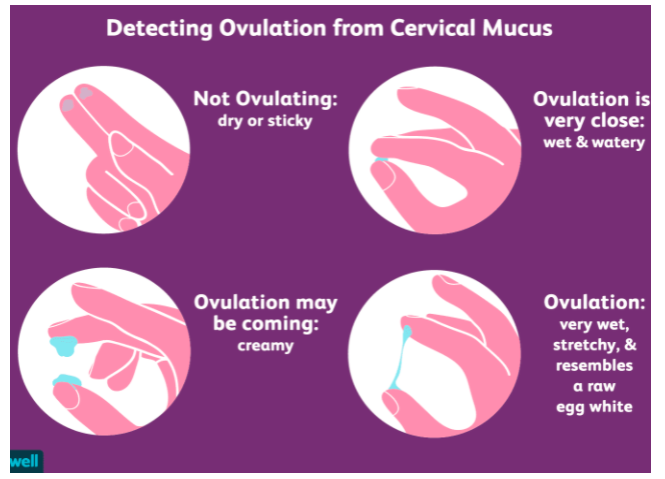How To Know When & If You’re Ovulating.. Part 2
/There are 3 ways to check and see if and when you’re ovulating- using BBT, LH strips, and checking the consistency and color of your cervical mucous. This blog post will touch on LH testing, and how to check your cervical mucous to know if you’re ovulating. For information on using a basal body thermometer, click here. *(link BBT blog post)
Testing For LH
LH is one of the hormones secreted by the pituitary gland. It gets secreted at very low levels throughout the month; however, once a developing egg follicle reaches maturity- much higher levels of LH get secreted. When LH surges, it signals that ovulation is about to happen, and then usually 12-36 hours later it occurs.
LH strips detect higher levels of LH (luteinizing hormone), so testing positive will usually indicate that ovulation will occur soon. In a healthy and regular cycle, ovulation generally occurs around day 14. However, predicting ovulation can be quite difficult for women with irregular cycles. LH strips are a valuable tool to find out when ovulation is occurring, especially in women with unpredictable and irregular cycles. LH strips are known to be pretty accurate in predicting that ovulation is coming within the next day or so. So, LH strips are a good tool for women who want to know when they are ovulating- either to prevent pregnancy or to try and conceive.
How To Use and Read LH Strips
The benefit of LH strips is their ease of use. You just need to pee in a cup and dip it into urine for about 5-10 seconds and then just lie the strip flat for 5 minutes. Once the five minutes are up you should have your results. Be careful not to dip the strip in too deep!
On an LH strip, there is one control line, and one that shows varying degrees of color depending on the concentration of LH your body is currently secreting. There are varying degrees of color that the test line will show and this correlates with LH secretion. A positive LH strip reads as both bars turning the same dark color and shade, or the test line showing up darker. If the bottom (or test line) shade is lighter to any degree, then it’s considered a negative result.
If you’re having trouble reading the tests, a quantitative LH test like the ones found at modern fertility (https://modernfertility.com/shop/ovulation-test/) might be helpful for you; however, they are a bit more expensive. The modern fertility LH strips and some other ones will actually come with apps, in which you can take a photo of the LH strip and it will actually log and read it for you as well.
Below is a photo of a positive and negative LH strip test. Photo courtesy of Pregmate.
If you have an irregular cycle, it’s important to take the LH strips every day starting on Day 5, until you get a positive one. If you suspect you might not be ovulating and haven’t gotten a positive test for several months and are feeling disheartened, know that acupuncture and/or herbal medicine, as well as dietary and lifestyle factors can definitely help address issues with ovulation or other hormonal disruptions.
Cervical Mucous
Did you know that the consistency and color of your cervical mucous changes in accordance with your hormone levels? When your body is preparing for ovulation, and LH spikes, your most fertile cervical discharge will look quite different than the discharge that comes on non-fertile, or not-as-fertile days.
Getting to know our cervical mucous may seem weird or uncomfortable at first, but knowledge and awareness of our own body is one of our strongest tools for achieving good health and fertility. It’s simple to do, you just need to be sure your hands are clean and using one finger- reach inside your vagina to feel your cervical mucous. You might not need to reach very far if you’re producing lots of cervical mucous. Studying the consistency over time will help you better understand what stage of your cycle you’re in and how it’s affecting your body.
A few days prior to ovulation- you may notice cervical mucous that is more wet and watery. Then, when ovulation becomes closer, your cervical discharge will become more viscous and sticky, and look clearer in color and stretchy. A lot of people describe fertile cervical mucous to be the texture of raw egg whites. After ovulation, the cervical mucous usually becomes more dry and pasty, and a whitish color.
A few days after your period, your cervical mucous might be a bit on the drier side as well. This is normal. Below is a graphic from the Verywell Family that helps to illustrate the different consistencies of cervical mucous. It’s not the case that you cannot get pregnant if you have creamy or sticky cervical discharge; however, a clear mucous that is stretchy and resembles raw egg whites will definitely increase the chances of conception because it means ovulation is occurring or about to occur.
graphic from Verywell Family
This blog post was written by Samantha Kloss.




